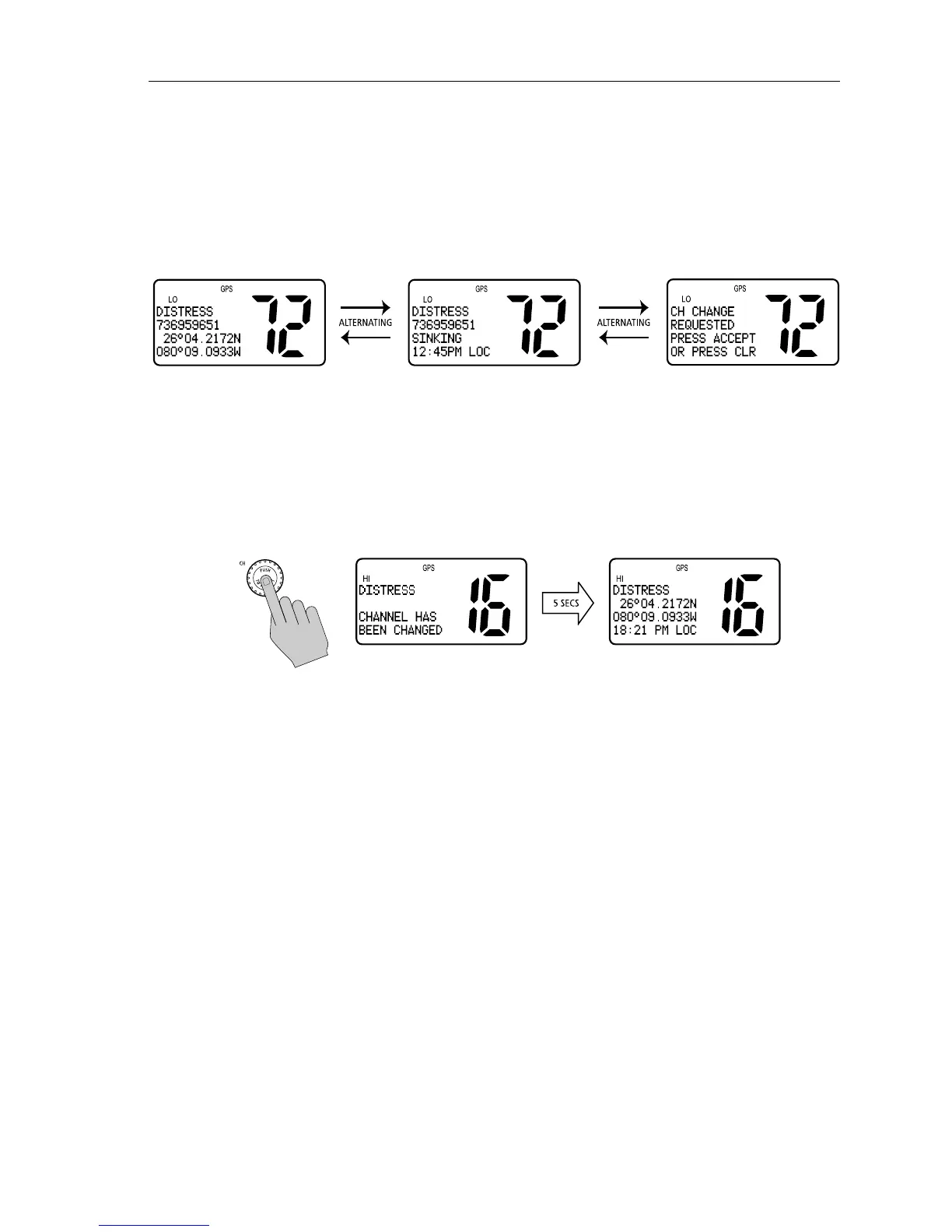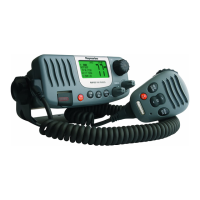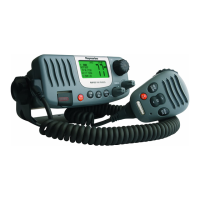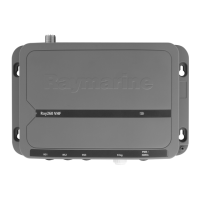Chapter 6: Menu Settings 83
Procedure When Disabled
If you accept DISABLE, on receipt of a Distress or All Ships Urgency Call you
are presented with brief details of the call and advised that a change to
channel 16 has been requested. You can either accept the channel change by
pressing ACCEPT (CH knob) or decline by pressing CLEAR, thereby
continuing to monitor your current channel.
If you accept the request, the call is received, a tone sounds and the radio is
changed to channel 16. Pressing any key disables the alarm. When position
and time data is included in the signal, it is displayed in the text area of the
LCD. If invalid GPS or Time data is received, the lat/lon position shows 9s in
all digits and all 8s for the time. The two alternating pages of data are recorded
in the Distress Call Log regardless of whether or not you accept the call.
If you ignore the call, after 5 minutes the radio declines the call, records the
call in the Call Log and maintains normal operation.






